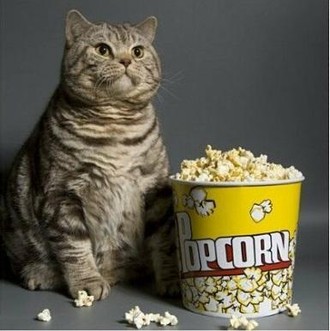
Didn’t you just love middle school science fairs? I’ll admit, science wasn’t my strongest subject and I didn’t venture out too far beyond the typical “which kernel brand will give you the most popcorn?” experiment. The judges weren’t too impressed, but I got to stuff my face with warm, buttery popcorn for days (in the name of science, of course) so who was the real winner here? Me… and Orville Redenbacher, if you were wondering.
Unfortunately, the judges weren’t as excited. They were, however, enthralled with my classmates “outside the box” project, the classic Volcano. I do suppose watching a volcano erupt is more exciting than watching a bag expand through a microwave window, so I’ll give credit where credit is due.
What is not exciting, however, is when the equivalent of that volcanic eruption takes place in your toilet… which is exactly what happens when you flush kitty litter.
When you mix baking soda and vinegar, you get a chemical reaction that results in expansion and eruption, mimicking the effect of a volcanic eruption. When you mix kitty litter with water, you get a similar result – the expansion of the kitty litter which, let’s face it, can erupt beyond the bowl.
Kitty litter was developed with the intention of maximum absorption, and these properties allow it to expand to approximately 60,000 times it’s original volume. Think about that for a second. That means that if you flush one cup of kitty litter, it could potentially expand to fill nearly 10 hot tubs! Now there’s an experiment that could have impressed those judges…
The fact is, septic systems were not designed to withstand the harmful effects of insoluble materials. Kitty litter, when permeated by any moistened material such as urine or fecal matter, dehydrates, hardens and petrifies the matter, making it difficult to flush but easy to clog your pipes (if it makes it that far). This can cause an unbelievable amount of damage to your pipes and cost you tens of thousands of dollars in repairs, not to mention the enjoyment you’ll get out of watching your yard being torn up.
If the thought of excavation and dishing out all your hard-earned money isn’t enough to alarm you, then perhaps Toxoplasma gondii will. Sounds scary, right? That’s because it is.
Cat waste is categorized as a pollutant by the Environmental Protection Agency (EPA) because it contains this harmful parasite that can hurt marine life and wildlife, kill vegetation, contaminate drinking water and make recreational areas hazardous to our health.
Luckily our bodies can fight this off for the most part, but if you have a fragile immune system you may not be so lucky. This infection can result in vision loss and brain damage, and in pregnant women, fetal development disorders and premature birth and death.
All things considered, the best thing you can do for the safety of your family, home and environment is scoop the poop and litter, and toss it in the trash. Otherwise, you can look forward to your cat sittin' back and enjoying the show, watching as you struggle to clean up the mess you've made.
Remember, you can only flush the 4 P’s: Pee, Poop, Toilet Paper, and Puke!